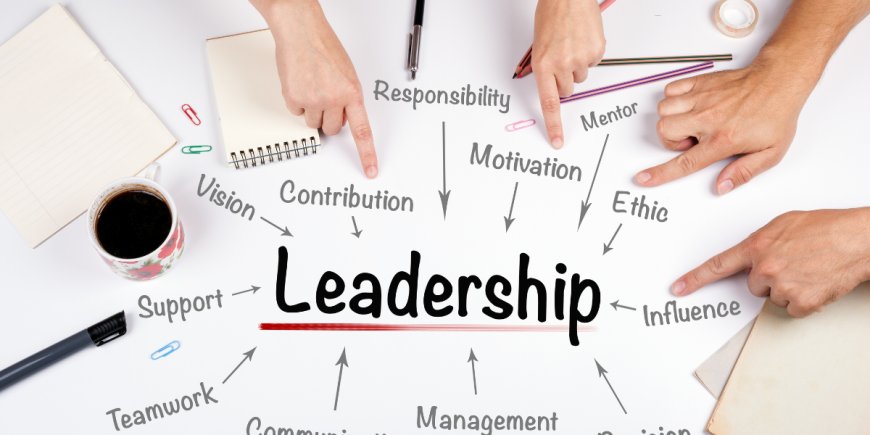The Power of Leadership Coaching: Leadership and Coaching in Action
Explore leadership and coaching synergy, how effective coaching strengthens leaders, boosts team performance, and fosters sustainable organizational success.

Leadership and coaching stand at the heart of organizational excellence. When they work in harmony, they shape behaviors, guide growth, and deliver results. Thats why leadership and coaching matter so much. They help leaders become effective, build strong cultures, and lead teams that perform at their best.
Leadership defines direction, while coaching personalizes the path. This synergy turns potential into performance. Coaching helps leaders refine their skills, navigate challenges, and model inclusion. Leadership ensures that those improvements move the whole organization forward. Together, leadership and coaching create a powerful engine for growth and resilience.
What Leadership Coaching Truly Is
Leadership coaching provides a structured, supportive environment where leaders can improve with feedback. It encourages self-awareness and accountability. Coaches ask smart questions, help set stretch goals, and support real behavior change over timeoften in weekly or bi-weekly sessions.
Unlike consulting or training programs, coaching focuses on the leaders specific context. It uses reflection, tools, and action to create meaningful growth. That real-world focus ensures that leadership and coaching have a direct impact. Over time, coached leaders build confidence, clarity, and competence that resonates across their teams.
Coaching also reinforces connection. Coaches serve as trusted advisors, helping leaders overcome isolation. Together, they build emotional resilience and practical skills. This long-term support equips someone to lead better today and tomorrow, elevating both leader and team performance.
Why Coaching Drives Performance
Coaching improves individual effectiveness, which multiplies across teams. Leaders who invest in improvement receive tailored support, which accelerates skill development. These improvements reflect across communication, decision-making, delegation, and team support.
Teams led by coached leaders report higher engagement, innovation, and accountability. This happens because coaching focuses on actions that support both productivity and connection. As a result, leadership and coaching drive measurable performance outcomeslike faster delivery, stronger retention, and better morale.
Moreover, coaching shifts leaders from reactive behaviors to strategic thinking. They begin to delegate more, communicate better, and handle problems effectively. This cascade effect lifts entire organizations toward higher performance and greater agility.
Coaching Techniques That Work
Effective coaching uses structured approaches: open questions, reflection, goal-setting, aand ctive listening. Coaches ask about intentions, obstacles, and results. They encourage leaders to report progress. They also offer tools to track change, like behavior journals or feedback logs.
Using frameworkssuch as situational leadership or strengths-based coachingadds rigor. Leaders learn to match style to situation, offer feedback, and develop others. These techniques bring clarity to everyday work and hard conversations.
Real-time coaching also plays a critical role. It offers immediate feedback after meetings, tough calls, or events. This mirrors athletic coaching, focused on response and review. It helps leaders course-correct in the moment and learn faster.
Overall, leadership and coaching link structured practices and real-world application to create sustainable behavioral change.
Embedding a Coaching Culture
Coaching is most powerful when it becomes part of everyday leadership. That means training managers at all levels in basic coaching skills. It means making coaching part of performance reviews, development forums, and casual check-ins.
When organizations encourage peer coaching, internal mentorship, and upward feedback, they distribute coach-like influence. This creates a growth cultureone where everyone feels they can learn and improve.
Embedding leadership and coaching in routines removes the stigma of asking for help. It normalizes development as part of work. That ongoing practice drives stronger performance, engagement, and trust.
Case Study: Tech Startup Grows Leadership Internally
A mid-size tech startup struggled with managers lacking people skills. They leaned into technology coaching without building soft-skill capacity. After launching a six-month leadership coaching initiative, managers learned to delegate, give feedback, and use empathy.
Teams reported higher clarity and less conflict. Projects met deadlines more often. This case shows how leadership and coaching can address hidden performance gaps and strengthen organization-wide capacity, without replacing culture or disrupting product teams.
Who Benefits from Leadership Coaching
Leadership coaching isnt just for senior executives. Emerging leaders, project heads, mid-level managersall gain from tailored support. Coaching gives them confidence and skills to step into bigger roles.
Supporting a new manager during the onboarding phase can prevent burnout. Coaching also helps seasoned leaders adapt during change. That makes leadership and coaching essential investments across career stages and organizational levels.
Cost vs. ROI: Why Coaching Makes Sense
Investing in coaching may seem costly by headcount. Yet ROI studies show that executive coaching returns six times the investment on average. That comes through improved leadership effectiveness, reduced turnover, and better performance.
When leaders develop stronger interpersonal skills, it keeps high-performers engaged. It reduces conflict and misalignment. It boosts collaboration and speeds execution. The resulting gains demonstrate why leadership and coaching pay back differently than traditional training.
Common Coaching Challenges and Solutions
Effective coaching requires trust, commitment, and organizational buy-in. A few pitfalls arise without careful planning:
-
Inconsistent engagement: Not everyone shows up to sessions. Fix that with scheduling discipline and clear goals.
-
Lack of coach readiness: Coaches need training, too. Provide a coaching certification or coaching circles for peer practice.
-
Failing to integrate: Coaching without reinforcement doesnt stick. Tie coaching goals into HR systems, reviews, and leader board activity.
Addressing those hurdles ensures leadership and coaching deliver real change, not just promises.
Technology that Supports Coaching
Todays coaching platforms enable better pairing, goal tracking, and feedback capture. Leaders can record sessions, set reminders, and share progress easily. Some systems support AI summaries of key insights or pattern recognition.
These tools scale coaching across locations and time zones, making leadership and coaching accessible beyond executives. It supports distributed teams and remote work with consistency and continuity.
Scaling Coaching Globally
Global businesses face unique challenges: cultural differences, language, and legal requirements. Coaching programs must adapt to local contexts while sharing a core methodology.
For example, coaches in APAC may adapt communication norms. In Europe, GDPR compliance matters. Still, core principles of leadership and coachinglike clarity, reflection, and accountabilityremain universal.
Coaching as Leadership Development
Some companies frame coaching as the top tier of leadership development. They combine training (workshops), action learning (projects), and coaching (personalized support). This three-legged stool strengthens both individual capability and collective capacity.
This model proves that leadership and coaching together accelerate growth. It creates leaders who can think, feel, and act with impact, while aligning with strategy and culture.
Action Steps: Launching a Coaching Initiative
To start a leadership coaching program, follow these steps:
-
Define goals: Who benefits? What will success look like?
-
Select coaches: Consider external or train internal coaches.
-
Invite participants: Start with early adopters and team leads.
-
Set schedules: Consistency wins.
-
Track goals: Use development plans and metrics.
-
Hold reviews: Quarterly check-ins to evaluate impact.
-
Scale gradually: Use success stories to grow participation and investment.
These steps ensure leadership and coaching become integrated and supported, not sidelined.
The Future of Leadership Coaching
With remote teams and constant change, coaching will become more automated, intelligent, and embedded in systems. AI may suggest questions or patterns in leader behavior. But at its core, coaching stays human-focusedasking questions, modeling empathy, and guiding reflection.
Organizations that understand leadership and coaching as both science and human practice will thrive. Theyll see leaders who can lead with clarity, no matter how uncertain things get.
Conclusion
Leadership and coaching are powerful together. Coaching sharpens skills, builds resilience, and deepens trust. Leadership scales potential into performance and possibility into practice. When businesses embed both intentionally, they create cultures of growth, connection, and achievement.
In summary, leadership and coaching elevate individuals, boost team performance, and build organizational advantage. Invest in it now, and youre investing in the future growth and effectiveness of every personand every purposeyou serve.




































